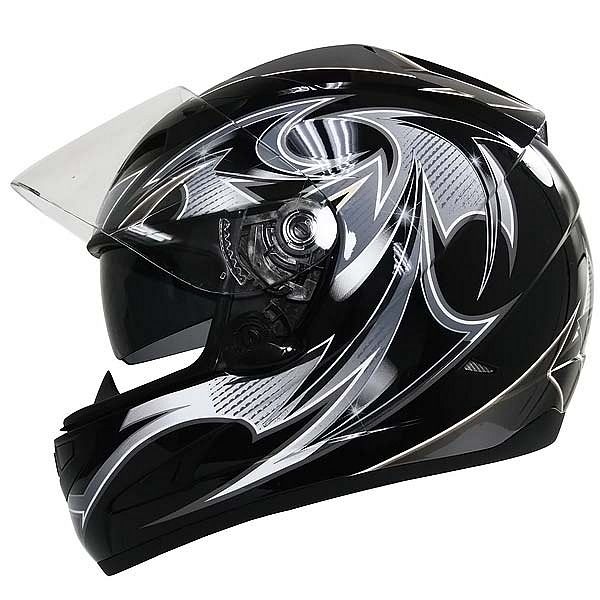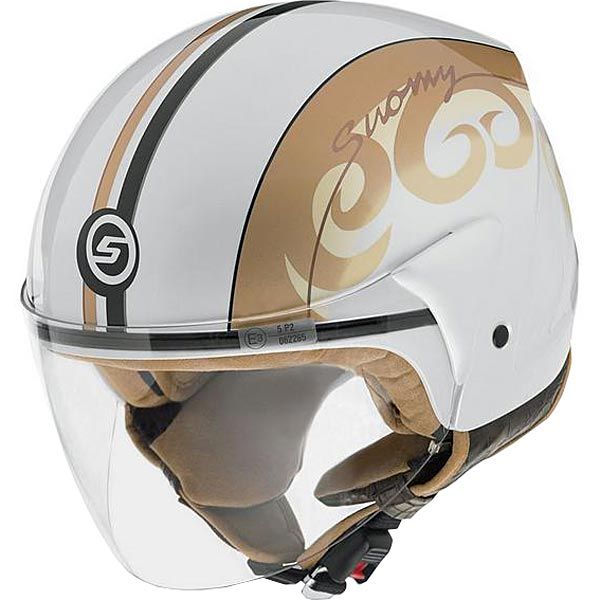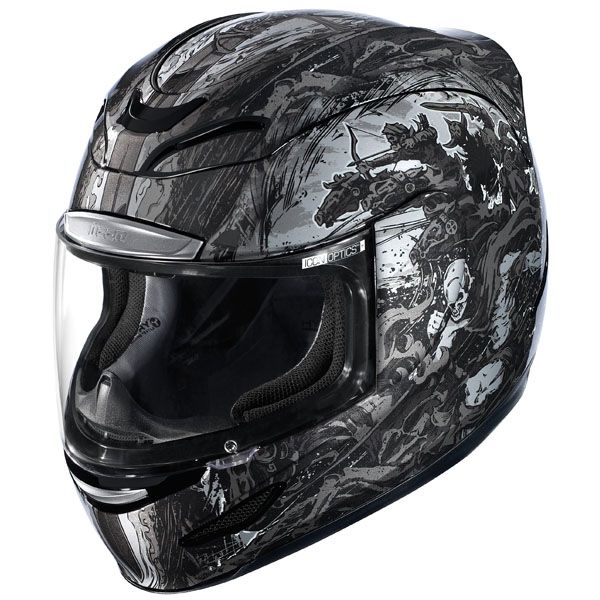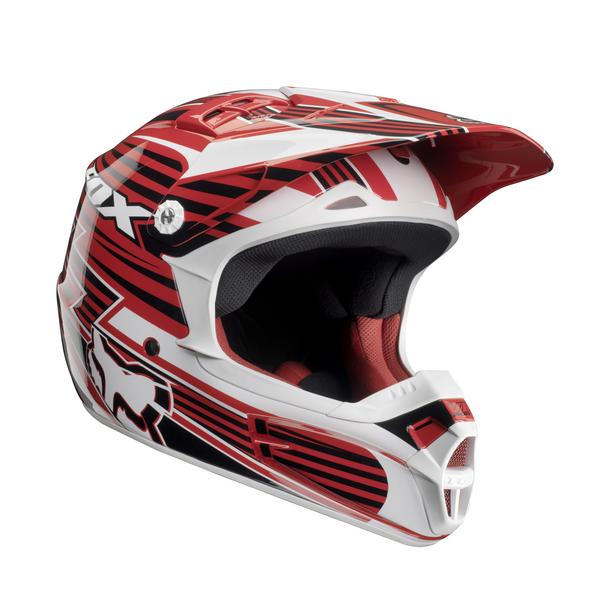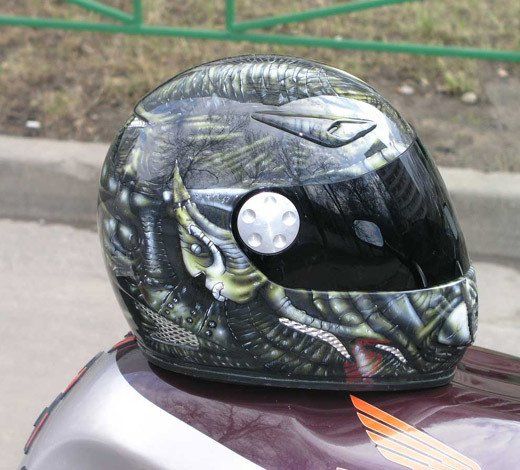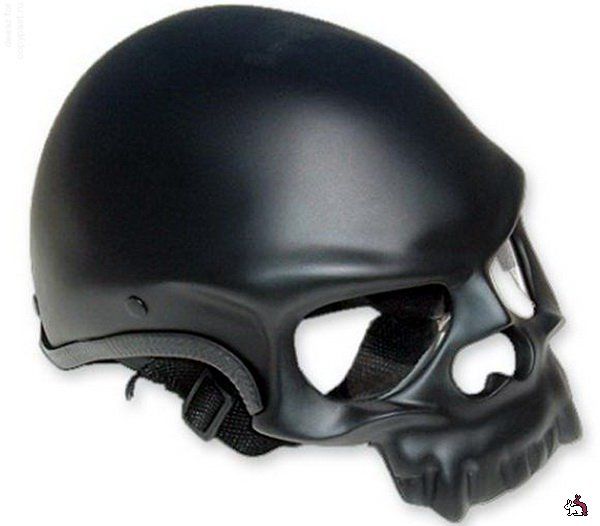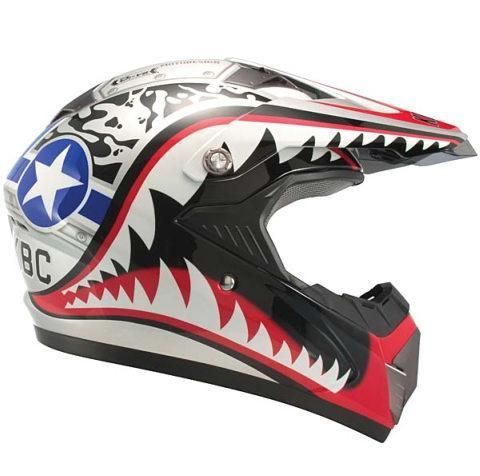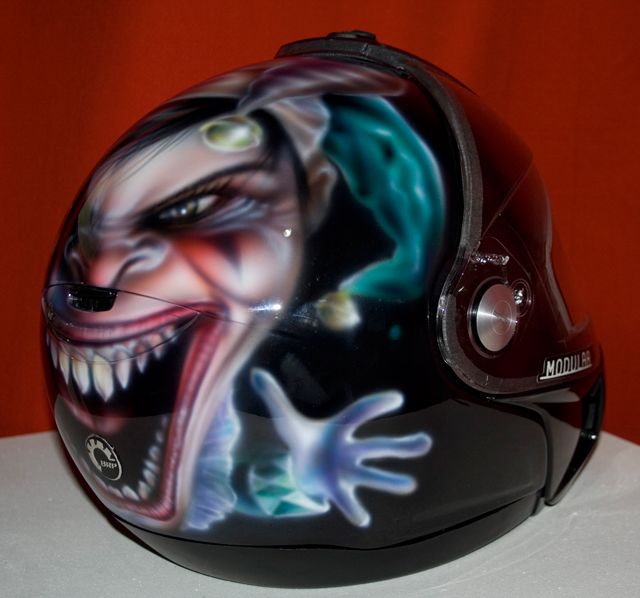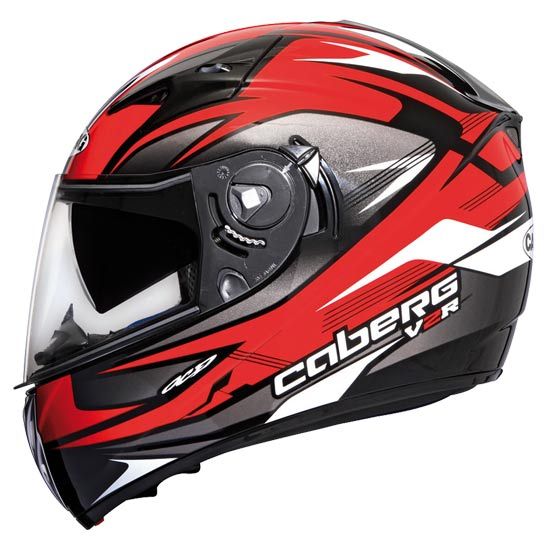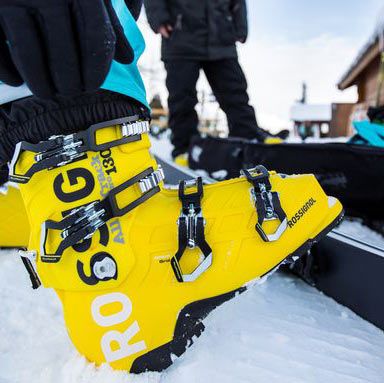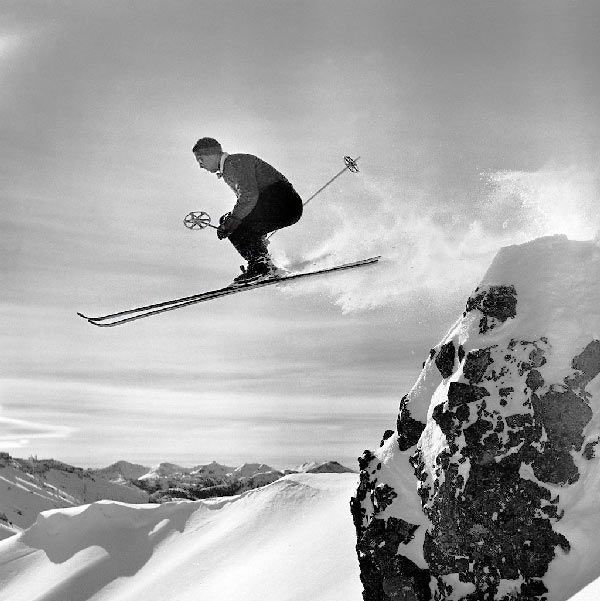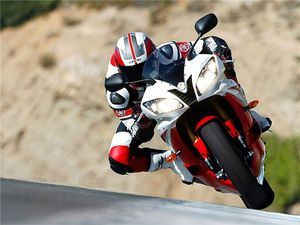 Motorcycle Helmets
A motorcycle helmet should be the primary piece of protective gear for any motorcyclist. Of course, there will always be reckless riders who ignore basic safety requirements, but if a biker has a good head on their shoulders, they should protect it reliably.
Motorcycle Helmets
A motorcycle helmet should be the primary piece of protective gear for any motorcyclist. Of course, there will always be reckless riders who ignore basic safety requirements, but if a biker has a good head on their shoulders, they should protect it reliably.
Additionally, a helmet provides good aerodynamics, protection from precipitation, wind, dirt, insects, and objects that often fly out from under the wheels of vehicles ahead.
Choosing a motorcycle helmet is an extremely responsible task. Never be tempted by a low price combined with bright colors or intricate designs. Remember, a helmet is entrusted with the life and health of a motorcyclist, so safety must take precedence. Creativity and aesthetics are great, but they should always come second and not compromise protective qualities.
Types of Motorcycle Helmets
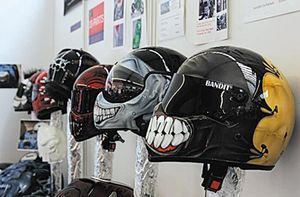 Photo of Motorcycle Helmets
The helmets with the highest protective qualities are those designed using the Full-Face integral scheme. These helmets completely cover the entire head, face, and chin of the motorcyclist.
Photo of Motorcycle Helmets
The helmets with the highest protective qualities are those designed using the Full-Face integral scheme. These helmets completely cover the entire head, face, and chin of the motorcyclist.
A downside of such helmets is that they can feel hot during warm seasons, though manufacturers continually strive to improve ventilation systems. The structure isn’t lightweight and may not be entirely convenient for those who wear glasses regularly.
Off-road Racing in Mud Off-road racing - read about thrilling muddy jeep races on our website.
Check out a list of the best skateboarding movies on this page . Watch “Skating to Death” online.
- Some of these shortcomings are addressed in hybrid helmets known as “modular helmets” or Flip-up Helmets. The hinged design allows the chin guard to be flipped up, enabling the rider to expose their face during short breaks, for instance, to drink water or have a quick chat. They are also more convenient for glasses wearers.
One disadvantage of these models is that they are relatively expensive and slightly heavier than full-face helmets due to the added complexity of the structure.
A subtype of full-face helmets is the off-road helmets. These are characterized by a significantly extended chin guard and a sun-and-dirt visor. They offer excellent ventilation qualities and are typically used in sports in combination with protective riding goggles (although some models are equipped with visors).
The “three-quarter helmet” securely covers the head, ears, and the sides of the face, but lacks a chin guard. These are convenient for daily rides at moderate speeds and are often used on cruisers and choppers.
The “open-face helmet” (also called “half-helmet,” brain cap, or moto cap) is the simplest and lightest design, offering the lowest level of protection. It only covers the upper hemisphere of the head. These are more suitable for low-speed rides on scooters. Many manufacturers don’t even certify such helmets, considering them insufficient for providing motorcyclists with proper protection.
Helmet Construction
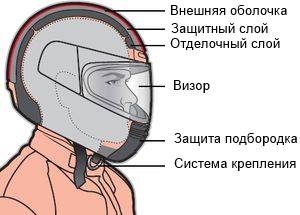 Motorcycle Helmet Design
Every helmet, regardless of its type, must include several essential structural elements.
Motorcycle Helmet Design
Every helmet, regardless of its type, must include several essential structural elements.
The outer shell of the helmet provides protection from impacts with outside objects and distributes impact forces across lower layers in case of an accident. Additionally, it should possess good aerodynamic qualities. It is typically made from polycarbonate, fiberglass, or thermoplastic.
Fiberglass shells are durable and long-lasting.
Polycarbonate shells are significantly lighter but much more expensive.
Molded plastic shells are the cheapest, but their longevity leaves much to be desired, and they are vulnerable to aggressive chemical exposure (such as gasoline, solvents, exhaust, etc.).
The safety layer primarily functions to absorb impact energy. It is typically made of polystyrene foam. Cheaper helmets may lack this layer, and such helmets shouldn’t even be considered when purchasing.
The comfort layer ensures the helmet is comfortable to wear and fits snugly on the rider’s head without compromising overall comfort. In many models, this layer is removable, allowing for periodic cleaning or washing.
The ventilation system is especially important for full-face helmets. It enhances the comfort of the helmet and significantly reduces visor fogging. Mounting System – Present on open-type helmets and includes chin straps. When choosing a model, it is essential to pay attention to the comfort of the straps and the reliable fixation system for the locks.
Snowscoot An intriguing article about unusual winter sports: natural track luge, snowscoot and others.
We’ve also compiled a list of the top five movies about snowboarders and skiers. If you’re unsure what to watch, check this out .
You can read about parachute jumps on this page .
Eye and Face Protection – This can include a visor or protective shield, also known as the helmet visor, which deserves special attention.
Choosing a Visor for a Motorcycle Helmet
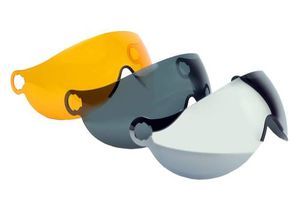 Visors for motorcycle helmets
The importance of a protective shield (motorcycle helmet visor) cannot be overestimated. It must combine high protective properties, safeguarding the eyes from dust, water, and dirt, as well as protecting the face from oncoming, and occasionally frostbitingly cold, airflow. At the same time, it should provide excellent visibility to allow full evaluation of road conditions.
Visors for motorcycle helmets
The importance of a protective shield (motorcycle helmet visor) cannot be overestimated. It must combine high protective properties, safeguarding the eyes from dust, water, and dirt, as well as protecting the face from oncoming, and occasionally frostbitingly cold, airflow. At the same time, it should provide excellent visibility to allow full evaluation of road conditions.
When purchasing a motorcycle helmet, you should check whether the visor on the specific model is a replaceable part. This is because the visor ages much faster than the helmet itself, due to the abrasive impact of airflow or due to clouding caused by sudden temperature changes or chemicals.
The visor should have a good mounting system that securely fixes it both in its lowered, operational position and when raised upward.
Many motorcyclists use tinted visors, which are helpful when riding on a bright sunny day. However, as dusk falls or during nighttime darkness, visibility with such a visor becomes severely limited. Therefore, if financially feasible, it’s better to purchase several interchangeable visors for different conditions.
A separate issue is visor fogging. Some manufacturers advertise their visors as having a special anti-fog coating. While this initially works well, scratches and clouding often appear over time, significantly reducing the visor’s clarity.
To combat this issue, special sprays or lubricants are also used, but this process requires regular maintenance. A good solution is the application of the “Pinlock” system. This is an additional transparent film-style lens that closely adheres to the inner side of the visor.
There are several Pinlock modifications – adhesive lenses or ones fastened to the visor with screws. Some motorcycle helmet models or replaceable visors already come equipped with a built-in Pinlock, which can be replaced periodically if needed.
Autogyro photo Do you know what an “autogyro” is? Read about this unusual flying machine and check out photos of autogyros of various models on our site.
Learn about flights in wingsuits in another one of our articles.
Choosing a Motorcycle Helmet
 How to choose a motorcycle helmet correctly
Although motorcycle helmets have size classifications, it’s best not to overly rely on this. Different manufacturers may use their own sizing systems based on numerical or letter labels, measured in inches or metric units.
How to choose a motorcycle helmet correctly
Although motorcycle helmets have size classifications, it’s best not to overly rely on this. Different manufacturers may use their own sizing systems based on numerical or letter labels, measured in inches or metric units.
Of course, it’s a good idea to measure the circumference of your head again before heading to the store – this will help with the initial selection. However, trying the helmet on remains a mandatory step in the purchase.
The helmet should be put on fairly easily, from top to bottom.
It should fit snugly on your head without squeezing. There should be no gaps between the helmet’s forehead and temple areas and your head (a large finger should not pass through).
Once the helmet is fully on and the chin strap is secured (if present), attempt to move the helmet with your hands and shake your head in different directions – a well-fitted helmet should not shift. The strap should not be too tight, and it must have adjustable options, while the locks should unfasten easily.
If the helmet has rear neck protection, it should not shift when tilting your head backward.
During the fitting process, wear the helmet for at least 5 minutes to ensure it feels comfortable on your head. The initial impression that the helmet is slightly too tight may disappear as the elastic comfort layer adjusts to the required configuration. After removing the helmet, ensure there are no pronounced areas of increased friction between the inner lining and the skin (such as the cheeks, ears, or neck area).
It’s essential to ensure the helmet and visor provide good visibility in all directions. Motorcyclists who wear glasses regularly must ensure the design allows for their use.
When selecting a helmet, close attention should be paid to the integrity of its outer shell – it should have no signs of impacts, scratches, chips, or similar damage. Additionally, a quality helmet is a meticulously designed product that should not tolerate any self-made “modifications.”
Never under any circumstances should you purchase a used helmet, no matter how “cool” or “sophisticated” it is portrayed to be.
And finally, every helmet has a specific lifespan, even if it hasn’t been subjected to significant mechanical impacts. Even the manufacturers of the highest-quality models recommend replacing it no less than every 4 years. For helmets made of molded thermoplastic, this period is even shorter—up to two years.
A helmet retains its protective properties only until the first serious impact. If such an incident occurs (even if not during an accident, but simply from a fall from a height), it must be replaced immediately.
